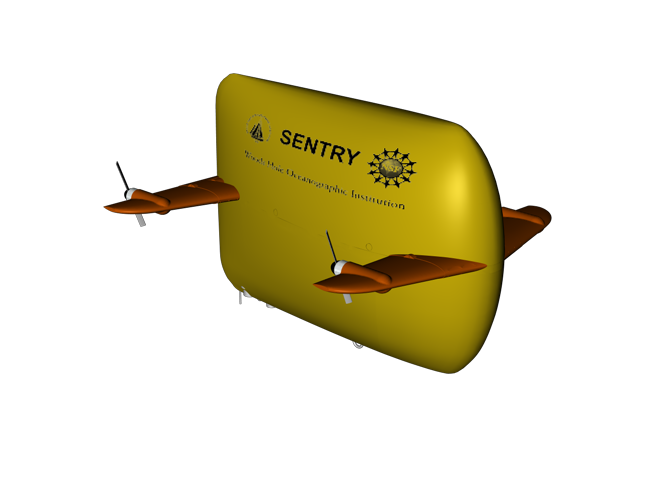
Sentry produces high-resolution maps of the seafloor and takes digital photographs of the bottom to create a detailed picture of features like mid-ocean ridges, deep-sea vents, and cold seeps. (Animation by Jack Cook, Woods Hole Oceanographic Institution))
WHOI Senior Scientist Dana Yoerger explains how Sentry works. (Video by Ken Kostel, Woods Hole Oceanographic Institution)
Sentry is a fully autonomous underwater vehicle capable of carrying sophisticated sensors and exploring the ocean down to 6,000 meters (19,685 feet) depth to produce bathymetric, sidescan, subbottom, and magnetic maps of the seafloor. It is also designed to navigate through a variety of deep-sea terrain, such as mid-ocean ridges, hydrothermal vent fields, and cold seeps and of taking thousands of digital images that scientists use to produce high-resolution mosaics of seafloor features. Sentry is increasingly used as an advance scout to locate features that scientists would like to study in greater detail with Alvin.
| Height | 1.8m (5.9 ft.) |
| Length | 2.9m (9.5 ft.) |
| Width | 2.2m (7.2 ft.) |
| Weight | 1,250kg (2,756 lbs.) |
| Depth | 6,000m (19,700 ft./3.7 miles) |
| Endurance | 20-40 hours |